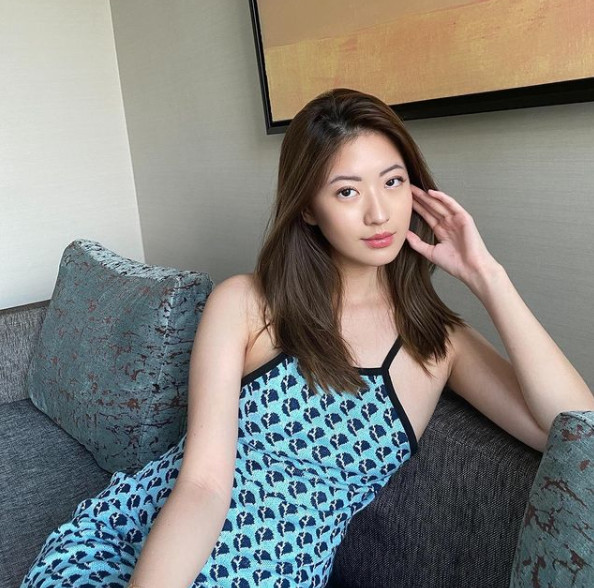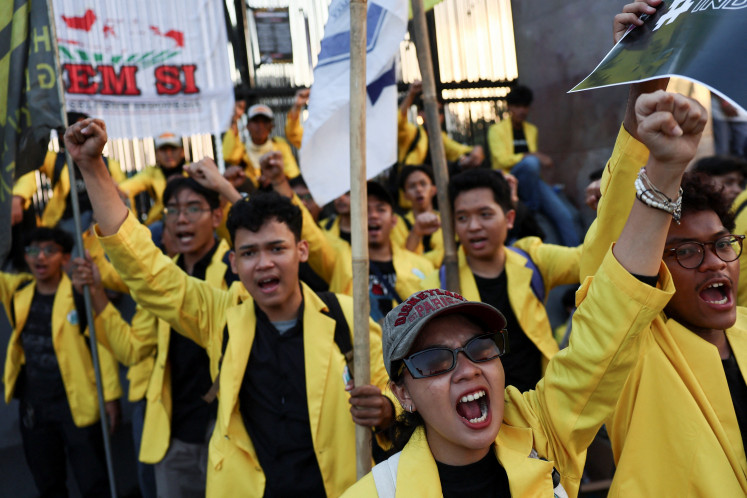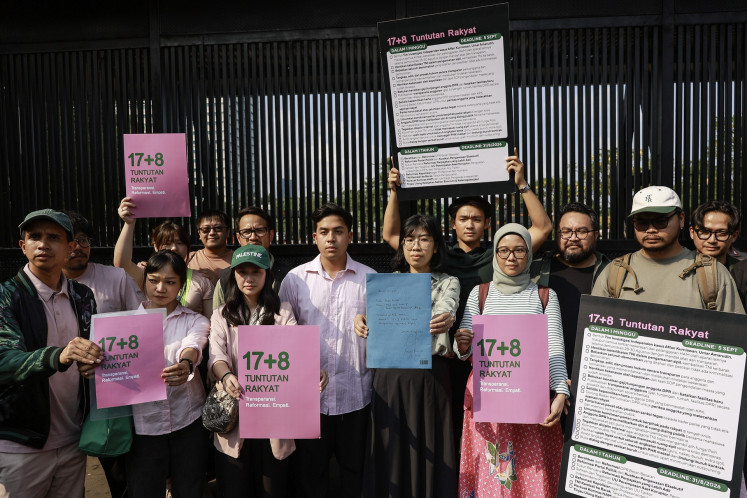Popular Reads
Top Results
Can't find what you're looking for?
View all search resultsPopular Reads
Top Results
Can't find what you're looking for?
View all search resultsSelling exposure: The value of social media influencers
Influencers are getting millions of rupiah for product endorsements, which critics see as too much money for too little work. Influencers push back against the assumption.
Change text size
Gift Premium Articles
to Anyone
I
n the world of marketing, the high price of collaborating with public figures as brand endorsers is not uncommon and one of the most used marketing strategies.
As the age of social media “influencers” emerges, critics point their criticism at what they consider “easy money” made for little more effort than creating curated visuals and settings. Many discredit the influencers’ efforts, contrasting it against conventional office jobs and other forms of traditional work.
Content takes time
Elika Boen (@elikaboen) and Valerie Pola (@valeriepola) are two of many Indonesian Instagram influencers focusing on the beauty and fashion industry. The two, unsurprisingly, prefer to avoid the much-maligned term.
Valerie, 17, said she was merely a public figure who made her name online. She found fame posting pictures of herself on the photo-sharing app and singing cover songs on YouTube. With 290,000 followers, Valerie is a relative newcomer, having only started her social media business when the pandemic began.
Elika, 25, who has 237,000 followers, prefers to be referred to as a “content creator”. “I don’t even really know when this ‘influencer’ term started to exist, and what standard people have to officially call someone an influencer. I’ve been active in the social media realm, and started working with brands since 2014”
Elika adds that “Back then I still did not see social media or content creation as a legit job. So, I just did some brand collaborations and brand photoshoots as a side job, because it was something that I love to do and am passionate about. Eventually, in early 2019, I decided to make this my full-time job.”
Both have worked with many brands and before committing to any endorsement or collaborative work, always make sure that certain boxes are ticked.
Being honest: Valerie believes endorsing products means she has to always be honest to her followers. (Personal Collection/Courtesy of Valerie Pola)Read also: SMEs turn to social media influencers for business boost
Elika said it was very important to her that the brand’s image should align with her. “I’ll consider whether the brand has the same vision as me, [whether it is doing] good and [sharing] valuable material,” she said.
Valerie says it is all about being honest with her followers. Before she posts an endorsement, Valerie makes sure to use the product for a week. She thinks it is crucial that she does not promote any “bad quality” or unworthy products.
Staying on brand
After they agree on a deal, the next step is preparing content.
“After the trial, and only after the trial process, I proceed with figuring out the concept for the picture, looking for photo spots, and taking a review video or picture, depending on the brand's request," explained Valerie. "Taking pictures for a brand usually takes me a few hours. After that, I'd have to come up with a caption for the photo chosen.”
Elika does the same, she will use the product for a certain period of time. If the product is suitable, she will proceed to the photoshoot or video shoot.
“As for the pictures and videos, I usually process them when the concept is ready. Sometimes it can be produced ‘naturally’ as I go through the day or I may have to set a one-day photoshoot and video shoot for a brand.”
“However, I always try to naturally fit the content into my daily life as much as possible, since I mainly use my social media to share, not to sell. This is why it’s important to me to filter brands and products that suit my life well, and not let a certain brand or product change my daily life and routines.”
The price matches the effort
Speaking about the actual fees, influencers’ rates vary depending on how big the brand is and what kind of content the brand asks for.
Elika says she makes up to two digits (in million rupiah) in fees for a single post. Before deciding on her fee, Elika researches and adjusts her fee to what the brand and its audience are.
When asked what they would say if someone said to them that “influencers are overpaid,” the two justified their efforts.
Elika said that critics “don’t know the effort - the process of generating ideas for content. And if [they] look closer, there are struggles behind every story and every person. The long process and journey it took to become who [influencers] are today; it took years, a lot of practice, hard work - nothing worthy comes easy,” said Elika.
Dedicated week: Elika Boen dedicates a trial week before agreeing on being endorsed by any skincare and beauty brand. (Personal Collection/Courtesy of Elika Boen)Read also: We do not hire buzzers, only social media influencers: Presidential office
“And that is what makes us different from the others. You are not paying for a single picture. You are paying for someone’s personal story. Your product may not be suitable for everybody, but you choose a particular influencer because you know it is worth it to have them portray an image for your brand.”
Elika also added that the high demands of social media influencers were the result of shifting trends in advertising. “A few years back, we used to see advertisements on TV, but now everything has changed. Social media is now becoming the primary channel of people’s attention, and all advertisements are pivoting to digital marketing.”
Novi Akbar, a 41-year-old manager at a bank in West Jakarta thinks that influencers are "privileged" people exploiting their privilege.
"I don't mind them, and it's not their fault. But I would be lying to say that I don't envy [the fact that] they are all beautiful and handsome and have the gear and time to make such content. Do you think I can spend time looking like [them] and taking those kinds of photos?"
Fenny Putri, a 28-year-old housewife said it all went back to jealousy, but that she avoided feeling such emotions because it was a sin. Perhaps a clear example of what Elika and Valerie say is a skewed perception of what they do, Fenny says that "Those influencers just take photos and make a hundred million [rupiah] or something. It's crazy that so many [people] can make such amounts of money for such little work."
More than sales
MINE, a casual fashion brand for women has endorsed influencers several times. Yuti Resani and Hani Kenisha, sisters and the founders of the brand revealed that the process of deciding on influencers to work with was not that simple. The influencers’ style, engagement rate with their followers, followers circle and personality must be taken into account.
Carawear, another fashion brand, also put the engagement rate and the influencer's personality into consideration. The brand spends around Rp 1 million (US$69) for micro-influencers and Rp. 3.5 million (US$ 242) for macro-influencers, according to the brand’s creative director, Meggie.
When asked whether working with the influencers had resulted in rising sales, both brands could not decide on a specific answer.
“Yes and no,” said Yuti and Hani. “Of all the products we are seeding, let's say 20 SKUs [stock keeping units]. I would say five SKUs will see an increment in sales. So it's not always 100% successful.”
Meggie agrees, saying that the market is unpredictable. “One day you can endorse one influencer and it affects the revenue or the marketing target and then another day you endorse the same or other influencers, and it won’t affect sales that much or maybe not at all.”
However, both brands added that endorsing influencers was more than just sales, it was about engagement, reach and the exposure they gained in return. They also confidently said endorsing influencers was worth the price.
“Influencers are vital for any brand today. People are constantly on their smartphones. We can't rely on and can't afford conventional media placement such as television, old magazines, etc, especially for small local businesses. We maximize social media and work with influencers to leverage reach and awareness,” closed Yuni and Hani.
omhg













